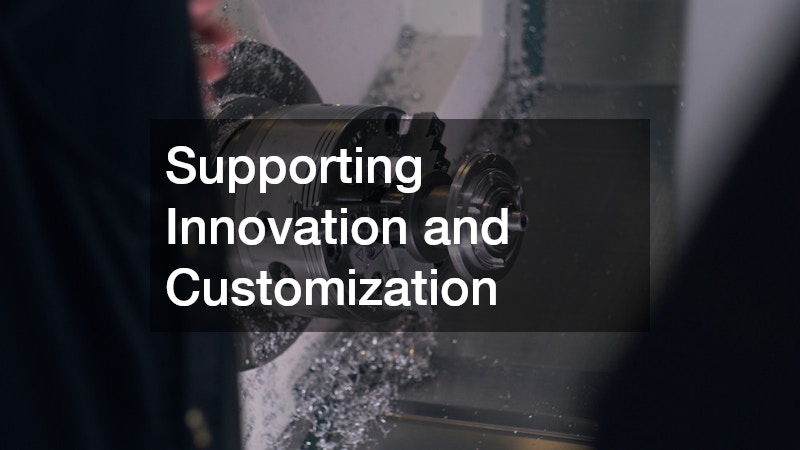In today’s fast-paced manufacturing environment, companies are under constant pressure to reduce costs while maintaining high-quality production standards. Traditional methods often involve repetitive manual labor, slower turnaround times, and higher error rates, which can increase operational expenses. Enter robotic fabrication services—a solution that combines precision, speed, and efficiency. By automating complex tasks, businesses can streamline their operations, reduce waste, and achieve a level of consistency that manual processes struggle to match.
Beyond immediate cost savings and efficiency improvements, adopting robotic fabrication services also positions companies for long-term growth. Automation enables manufacturers to scale production quickly in response to market demand without sacrificing quality. It also opens opportunities to explore more advanced manufacturing techniques, integrate new materials, and experiment with innovative product designs. By leveraging robotics, businesses can stay competitive in an industry that increasingly values speed, precision, and adaptability, while simultaneously creating a safer, more consistent work environment for their employees. This article explores how adopting robotic fabrication services can cut costs, boost productivity, and revolutionize modern manufacturing workflows.
Understanding Robotic Fabrication Services
A robotic fabrication service involves the use of advanced robotics and automation technologies to perform fabrication tasks that would traditionally require human labor. These tasks may include welding, cutting, assembly, and material handling. Unlike conventional methods, robotics can operate continuously, maintain exact tolerances, and handle intricate designs without fatigue.
By integrating robotics into the production line, companies gain access to a flexible system capable of adapting to a wide range of projects. From custom prototypes to high-volume manufacturing, robotic systems can adjust parameters in real time, ensuring precise output while minimizing errors. This adaptability not only improves product quality but also reduces the likelihood of costly rework or material waste.
Reducing Operational Costs
One of the most compelling advantages of robotic fabrication services is the potential for significant cost reduction. Labor expenses often account for a large portion of manufacturing budgets, and human error can lead to costly mistakes. Robotics help address both issues simultaneously.
Automated systems reduce the dependency on manual labor, allowing companies to allocate human resources to higher-level tasks such as design, quality control, and strategic planning. This shift can lead to a leaner, more efficient workforce without compromising productivity. Additionally, robotic systems operate with remarkable precision, which decreases material waste and minimizes the need for corrective work. Over time, these savings can offset the initial investment in robotic technology, making it a financially sound decision for many manufacturers.
Energy consumption is another factor that impacts operational costs. Modern robotic systems are designed for efficiency, consuming less power than traditional machinery running for the same duration. This energy efficiency contributes to lower utility bills and a smaller environmental footprint, aligning cost-saving measures with sustainable practices.
Enhancing Production Efficiency
Beyond cost reduction, robotic fabrication services significantly enhance overall production efficiency. Robots can work around the clock without breaks, fatigue, or performance fluctuations. This continuous operation accelerates production timelines, allowing companies to meet tight deadlines and respond quickly to market demands.
The precision and repeatability of robotic systems also ensure that products meet exact specifications every time. This consistency minimizes errors, reduces downtime for quality inspections, and enhances the reliability of supply chains. Furthermore, robots can perform complex or hazardous tasks that may be difficult or unsafe for human workers, enabling manufacturers to tackle challenging projects while maintaining safety standards.
Integration with digital tools further amplifies efficiency. Many robotic systems can be programmed and monitored through advanced software, providing real-time analytics and performance tracking. This data-driven approach allows manufacturers to identify bottlenecks, optimize workflows, and make informed decisions that drive productivity improvements across the board.
Supporting Innovation and Customization
Another key benefit of robotic fabrication services is the ability to support innovation and product customization. Unlike traditional mass-production techniques, robotics offer flexibility in design and execution. Manufacturers can rapidly prototype new products, experiment with innovative materials, and produce small batches without incurring excessive costs.
This adaptability is particularly valuable in industries such as aerospace, automotive, and medical device manufacturing, where precision and customization are critical. Robotic systems can execute complex geometries and intricate patterns that might be time-consuming or impossible using manual methods. As a result, companies can deliver unique products to market faster, staying ahead of competitors and meeting evolving customer demands.
Moreover, automation encourages a culture of innovation by freeing human workers from repetitive tasks. Engineers, designers, and technicians can focus on creative problem-solving, process improvements, and product development—areas where human expertise is most valuable. This synergy between robotics and human talent drives continuous innovation while maintaining operational efficiency.
Robotic fabrication services are transforming the manufacturing landscape by offering a powerful combination of cost savings, efficiency, and adaptability. By automating repetitive and complex tasks, businesses can reduce labor expenses, minimize errors, and accelerate production timelines. The precision and consistency provided by robotic systems ensure high-quality output, while their flexibility supports innovation and product customization.
For manufacturers seeking to remain competitive in an increasingly demanding market, investing in a robotic fabrication service is no longer a luxury—it is a strategic necessity. By embracing automation, companies can streamline operations, boost productivity, and position themselves for long-term success in a rapidly evolving industrial landscape.




